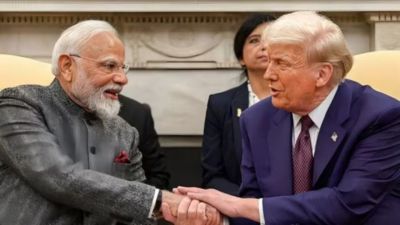Stay updated with the latest - Click here to follow us on Instagram
Deciphering Modi
The ancient Marathi script is steadily drawing historians and enthusiasts alike
Stumbling upon yellowing parchments can be intriguing to the most indifferent. But it takes much more than mere curiosity to study an ancient script and unravel its history. Yet many across the country are being drawn to the 12th century Modi script.
A cursive script,Modi is known to have been developed by Hemadri Pant,a scholar and prime minister under the regime of Mahadev Yadav and Ramdev Yadav who ruled the Maratha state in the late 13th century. It was in use until Devanagiri became the official script in the 19th century. While the number of letters in the Modi alphabet are the same as the Devanagiri script,the former was a faster way of writing and has a number of variations based on the period it was used in. For instance,the Modi script used during Shivajis time would slightly vary from that used during the Peshwas.
Mumbai-based Rajesh Khilari,who has been teaching people to read and write the Modi script for the last 15 years,says there has been a rise in the number of enthusiasts over the last two years. There used to be an average of 300 students of the Modi script across India in one year. Now,there are as many in a single month, says Khilari.
A large repository of Modi documents is in Pune at the Pune Archives and Bharat Itihaas Sandhodak Mandal (BISM),among other institutes. BISM now holds a 16-day workshop every two months attended by 30 to 60 students. Mandar Lawate,who conducts these workshops and wrote a guide to understanding Modi,says his students vary from college students and historians to housewives and professionals. Many see it as a lucrative opportunity, says Lawate who studied the script under Pune-based historian Gajanan Mehendale,an expert on Maratha history. Khilari says,A number of old government documents that were written in the Modi script need to be translated,which is a profitable occupation. Translators charge anything between Rs 100 to Rs 2,500 for a single page. These documents are found in various parts of country,including Thanjavur in Tamil Nadu and Indore in
Madhya Pradesh.
But for researchers,the lure lies in discovering facts that are unknown yet. The history of the Marathas and in fact the 18th century history of India itself is in the 40-crore documents written in Modi that are still waiting to be read. For instance,till 11 years ago,it was believed that Shivajis elder brother Sambhaji had only two sons. Through some Modi documents,it was eventually revealed that he had a third son too, says Khilari. Lawate himself has been studying the lifestyles of the Peshwas through these documents. I realised that they had wristwatches even in the 1770s,there used to be silver fountains inside their drawing rooms and the women had special headgear for the rains, he says.
The popularity of the script is also steadily percolating to the digital world. For instance,Pune-based Nikhil Salaskar,Gajanan Salgavkar and Vivek Chavan have launched a Facebook page and website to promote its understanding. I am also working on creating videos based on the e-learning pattern and my friend is working on an android app to teach the Modi script,
says Salaskar.
But merely a growing interest in the script is not satisfactory says Lawate. We need many people to translate the documents that contain our history. But we need more than mere transcribers,we need lovers of history to come forward, he says.
joyce.john@expressindia.com







